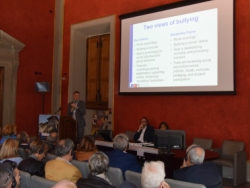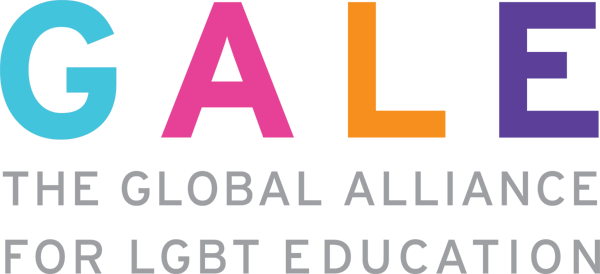GALE proposes adapted definition of bullying

1 October 2017 - During the annual conference of the European Anti-bullying Network (EAN), Peter Dankmeijer, director of GALE, proposed a reviewed version of the internationally accepted definition of bullying. Dankmeijer feels that the current definition does not reflect the realities of discriminatory bullying like homophobic and transphobic which are endemic is schools. Rather than focusing just on small scale interactions between a few individual students, bullying should also take larger social and cultural influences into account.
Olweus definition
The "inventor" of the modern concept of bullying is Dan Olweus. Olweus is Norwegian researcher who analyzed violence in schools and tried to find more sophisticated ways than punishing bullies and comforting victims. Research shows that punishing and comforting don't work to prevent further bullying.
The Olweus definition of bullying is: A person is bullied when he or she is exposed, repeatedly and over time, to negative actions on the part of one or more other persons, and he or she has difficulty defending himself or herself.
Recently, other researchers like Elizabethe Payne (USA) have criticized this view because it is individualizing and ignores the cultural context. Dankmeijer said much of homophobic bulling does not even target specific LGBT persons. It is often a more generalized downgrading of boys being soft and weak and like girls and no-real men (gays). This form of homophobia is most widespread and may also target boys who do not behave "masculine enough", whether they are gay or not. Lesbian, bisexual, transgender and intersexual students can be bullied and excluded in similar but slightly different ways, but still because they express their identity in a non-heteronormative way.
GALE definition
Dankmeijer proposed an adapted version of the definition of bullying: People are bullied when they are repeatedly exposed to policing actions with implicit or explicit intent to raise own or reduce others social status, and when it is difficult to defend themselves due to individual, social or cultural reasons.
This updated version recognizes that bullying is not just a small-scale process in which "a-social" bullies target specific powerless innocent victims. With a wider view, we can see that young people are involved in a power struggle for social status and that heteronormative stereotypes of ideal and marginalized images of masculinity and femininity are constantly used. If we want to combat bullying in a truly effective way, we need to take such culturally destructive mechanisms into account.
Read the full article based on the presentation during the EAN Conference


